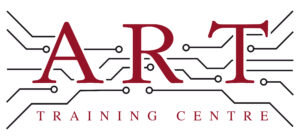Definition
BGA Rework is the process of repairing or replacing Ball Grid Array (BGA) components on printed circuit boards (PCBs). This involves removing defective BGAs and soldering new ones in their place, ensuring proper electrical connections. BGA Rework is essential in electronics manufacturing and repair, as it helps maintain the functionality and reliability of electronic devices.
How It’s Used in the Industry
BGA Rework is applied in several steps during electronics assembly. First, technicians inspect the PCB to identify faulty BGA components. Next, they use a rework station equipped with hot air or infrared tools to carefully remove the defective BGA. After cleaning the PCB pads, a new BGA is aligned and soldered in place using a reflow oven or a soldering iron. This process is crucial for both training technicians and aiding experienced professionals in maintaining high-quality standards in PCB production and repair. Proper BGA Rework ensures the reliability and longevity of electronic devices.
History & Origins
BGA Rework became common in the late 1990s as BGAs gained popularity in electronics manufacturing due to their compact design and improved performance. The development of industry standards, such as IPC-A-610 and IPC-7711/7721, provided guidelines for soldering and rework processes, which helped standardise BGA Rework. Advances in technology, including better soldering techniques and equipment, made it easier to implement BGA Rework, leading to its widespread adoption in the industry.
Variations
There are several variations of BGA Rework, including hot air rework, infrared rework, and laser rework. Hot air rework uses heated air to melt solder, while infrared rework employs infrared radiation to achieve the same effect. Laser rework is a more advanced method that uses focused laser beams for precise heating. Each method has its advantages and is chosen based on the specific requirements of the PCB and BGA component, making it essential for learners to understand these differences in order to select the best technique for a given situation.
Modern Applications
Today, BGA Rework is widely used in electronics production, repair, and professional training. It is particularly relevant for surface mount technology and advanced assembly processes. BGA Rework plays a vital role in ensuring product quality and reliability, complying with IPC standards. As electronic devices become more complex, the importance of effective BGA Rework continues to grow, making it a critical skill for technicians in the field.
Practical Tips & Training
When working with BGA Rework, it is important to follow safety precautions, such as wearing appropriate personal protective equipment and ensuring proper ventilation. Inspecting the PCB before and after rework is crucial for identifying any issues. Useful tools include a rework station, soldering iron, and inspection microscopes. Structured training and certification in BGA Rework techniques are essential for technicians to ensure quality and adherence to industry standards.


